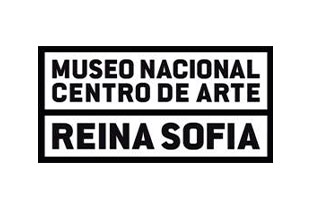Exhibition
Gaudí's Universe
Four hundred original works bring us nearer to the enigma of Gaudí and show us that this universe is where we will find the key to an understanding of his singularity, his way of working, of creating, of conceiving of the world, of becoming a vital referent. This is, undeniably, one of the central exhibitions of International Gaudí Year.
Gaudí's Universe, his mental and aesthetic world, is made up of the artists who influenced him (such as Ruskin, the pre-Raphaelites, Morris and the Symbolists), those who shared the same working system (like Rodin, Falguière or Camille Claudel) and those who picked up the germ of his work (from Dalí and Breton to Le Corbusier and Schwitters). They are all here in this exhibition which, like an exultant maison d'artiste, reveals to us a completely new and comprehensive approach to the work of this inspired architect.
The exhibition is divided into three sections. These three sections are not conceived in "strict" chronological order, as in Gaudí's body of work everything becomes permanent and reiterative, from the most general themes to the most particular elements, whereas stylistic classification and biographical periodification are limited and can more or less be discounted as instruments to explain his work. The exhibition includes original materials by Gaudí himself, accompanied by a broad register of materials and documents by other artists of the time with a view to illustrating the keys to his relationship with the historic and cultural context.
1. THINGS SEEN
This section centres on the cultural and artistic moment, both during Gaudí's formative years and the period during which he produced his first major works. It presents Gaudí's relationship with some of the major aesthetic trends of the last decades of the nineteenth century, such as medievalism and the dream it represented of a new synthesis of art, crafts and society; exoticism, particularly orientalism and japonaiserie; the baroque, particularly in the form of the interest of a society with aristocratic aspirations, as represented by Gaudí's clients, in the Rococo and the styles of the eighteenth century; and Wagnerism, with all the connotations deriving from the idea of the total work of art.
Naturally, in this section, some artists, architects or associations of artists have a very important role. This is the case, for instance, of Ruskin and the pre-Raphaelites; Morris, Webb and the Arts & Crafts movement; Viollet-le-Duc; Fortuny and other orientalists; Wagner and his set designers.
All of this without forgetting the great works of monumental architecture which captured Gaudí's attention during his youth, such as Garnier's opera house, or the world exhibitions, particularly those held in Paris in 1889 and 1900.
2. THE STUDIO
The second section of the exhibition is central, being devoted to the work of Gaudí and particularly to what was his underlying Project: the synthesis of art and architecture of which his contemporaries spoke when commenting on their constructions and, basically, Gaudí's interpretation of the idea of the total work of art.
The essential place in this section is Gaudí's studio, situated right beneath the Sagrada Família and the essential theme is an analysis of his working methods and process. The photographs which have been handed down to us of Gaudí's studio show it not as a traditional office of architecture where the working documents were drawn up but as a sculptor's studio with its full complement of plaster casts, models and machines. In fact Gaudí designed his buildings using constantly evolving models, whereas to give form to his sculptures, he used life models from which he made body casts. Both his models and casts were also photographed, and he would draw and make corrections on those very prints.
The use of models, body casting and photography certainly follows the same lines as the work of turn-of-the-century sculptors and painters: from Falguière, Clésinger and Claudel to other modern artists who used photography in a similar way, such as Sert. Yet the most important example is undoubtedly August Rodin, not only for his use of these procedures but also for the creative idea he represents which was so close to Gaudí's way of working: the figure of the artist-demiurge and the studio where matter is given form. Rodin's drawings, plaster casts and photographs are shown side by side with the plaster casts, models, sketches and photographs of Gaudí. This is also the place for the exhibition of works by artists related to or collaborating with Gaudí, such as the Llimonas and Carles Mani.
3. FORTUNE
The third section deals with Gaudí's success: the international reception of the man and his work in journals and exhibitions: from the first exhibition devoted to his work in Paris, held in 1910, to the MoMA show in New York, in 1936, with the title "Fantastic Art, Dada, Surrealism", which marked his appearance in the avant-garde media. This section unfolds the different registers of Gaudí's presence in contemporary art and architecture; in the German Expressionist circuit, from Frühlicht and the books of Bruno Taut to his influences on Mendelsohn, Finsterlin, etc.; via Le Corbusier and the Rationalists, to the broad appropriation of his body of work by the Surrealists: Dalí, Crével, Man Ray, Brassaï, ... and, finally, the fifties and the exhibition at the MoMA, marking the international confirmation of Gaudí as one of the "masters" of the modern movement.





